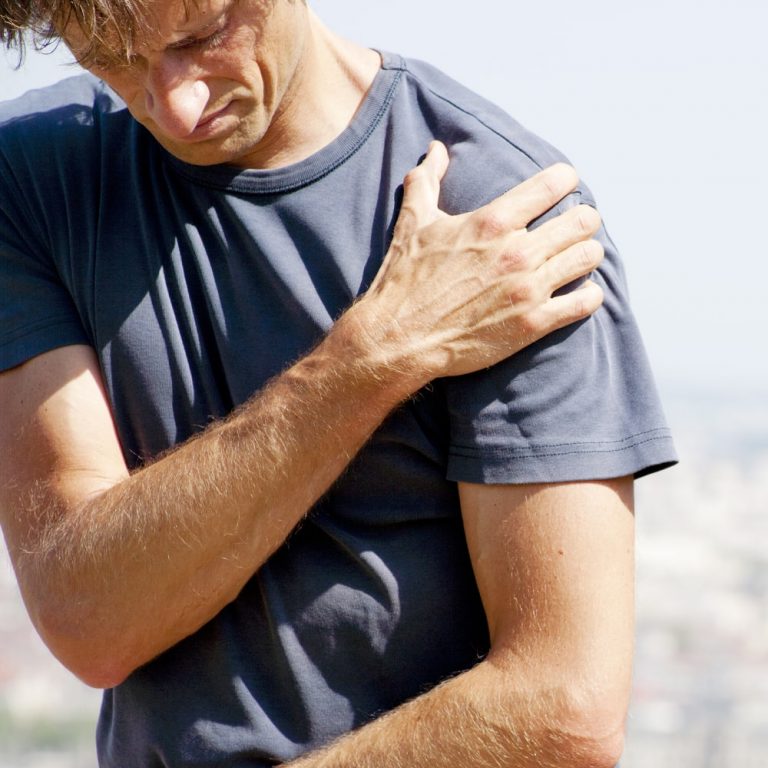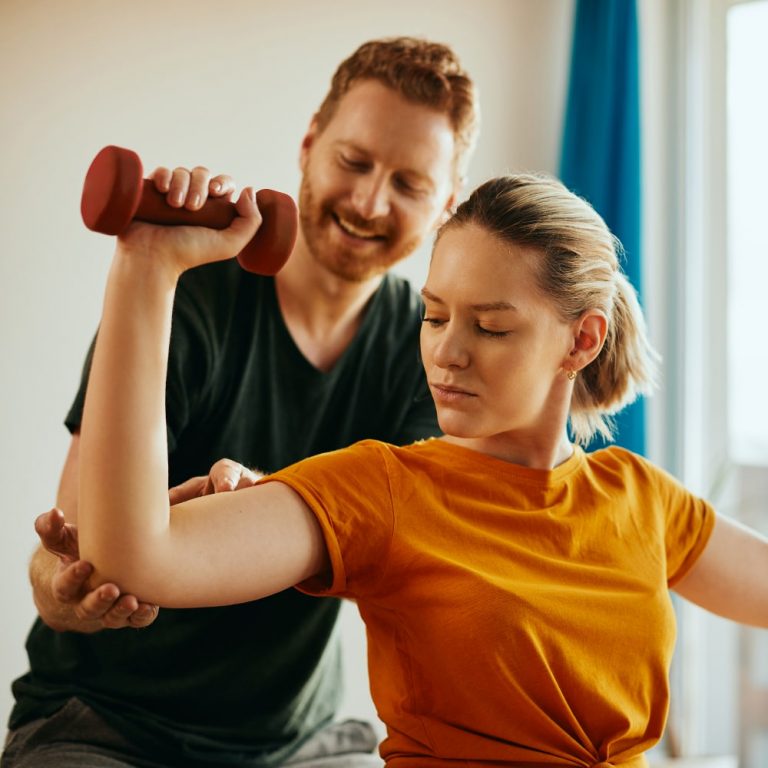Rotator Cuff Injury
Written by Kate Senini

What is a Rotator Cuff Injury?
The Rotator Cuff is a group of four muscles that both stabilise and move the shoulder joint. The Supraspinatus is the most commonly discussed muscle as it is at greatest risk of injury. The Rotator Cuff is also made up of the Infraspinatus, Subscapularis, and Teres Major muscles.
Whilst each muscle has an individual role, the four muscles all join at the top of the shoulder to form a “cuff” which enables them to work together to create stability in the shoulder joint. Injury to the rotator cuff can be in one or more muscles, and may be through a sudden traumatic injury or may occur through wear and tear over time.
Do you need treatment?
Book now
What Causes Rotator Cuff?
Sudden injury can often occur if you are performing activity above shoulder height under load such as throwing a ball, playing tennis, or lifting heavy items overhead.
Gradual onset injury is often seen if you have had overhead manual labour jobs for many years. This includes construction workers, or long-standing roles involving lifting or moving.

Common Symptoms of Rotator Cuff
Common symptoms include pain across the top of your shoulder that can radiate into the upper third of your upper arm. The pain is usually aching at rest or with minimal activity but can become very sharp if your shoulder is moved sideways, in the “painful arc” which is around shoulder height, or overhead.
Rotator Cuff can also cause weakness, or a sensation of instability in your shoulder when trying to perform usual daily tasks or higher-level sports/gym activity under load. The degree of pain and the severity your symptoms can be an indicator of the degree of injury.

Rotator Cuff Treatment
As part of their assessment, our physiotherapists will take a thorough history of your current injury and symptoms, and any previous injuries. It is also important to ascertain your lifestyle, work, and other factors that can lead to Rotator Cuff injuries.
Our physiotherapists may also perform an extensive specific physical assessment designed to identify whether the injury is in fact the rotator cuff, and if so which or how many of the muscles are involved.
Rotator Cuff injuries can relate to long-standing postural dysfunction contributing to wear and tear, so our team addresses all ergonomic and postural components. Our physiotherapists ensure they retain the positioning and role of your should blade, as this forms part of the shoulder joint that is influenced by the rotator cuff. You will also receive a range of specific exercises designed to improve the function and strength of your middle and lower trapezius muscles. The pectorals and other muscles around the front of the chest and shoulder are also assessed to ensure they are not tight and inhibitory to normal function.
Foam rollers can be used to assist the release of the mid to upper back. Therabands and dumbbells may also be used to retrain shoulder blade strength and positioning. Once this has been achieved, our physiotherapists are then able to work on isolated exercises for the four rotator cuff muscles themselves. The duration of holds, the type of weight, the degree of body weight bearing and the range of motion are all prescribed in fine detail in relation to the location of the injury within the rotator cuff. In particular, whether it has been a sudden or long term injury, and if any other structures within your shoulder have also been injured or affected.
Our physiotherapists are here to support you throughout your recovery journey. The timeline to recovery is different for everyone, and depends on your injury history. This can range from 2-4 weeks up to 6-12 months.
Get in touch to book an appointment now.
Book now